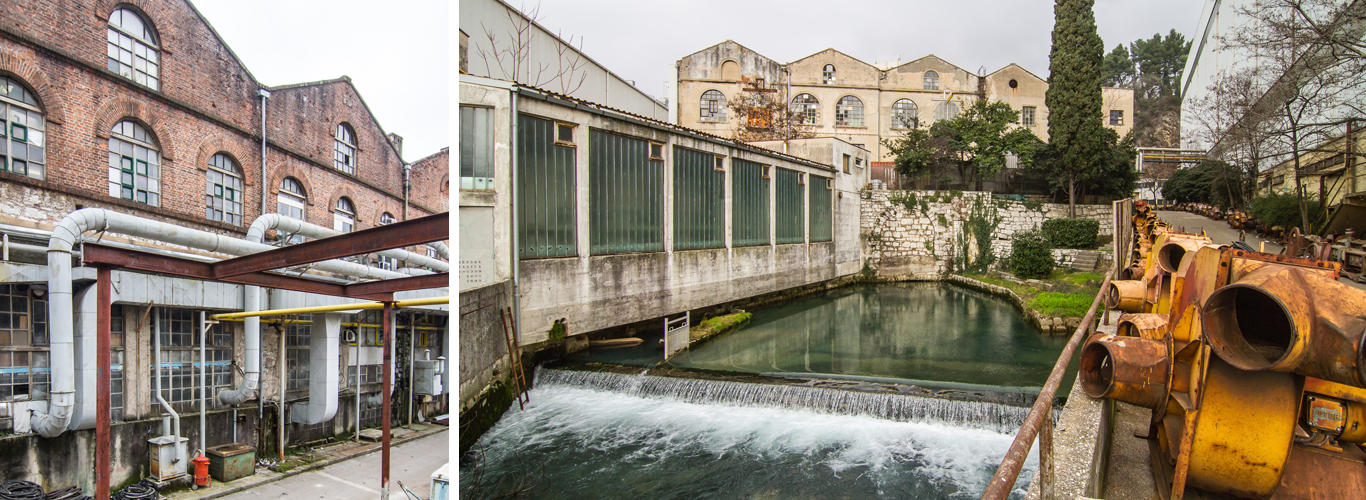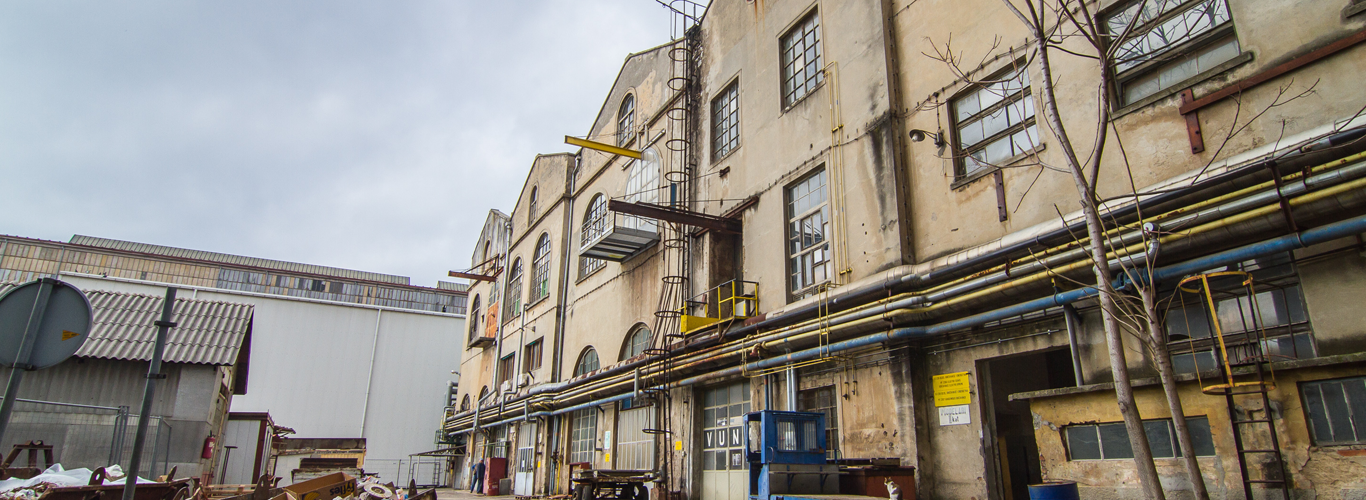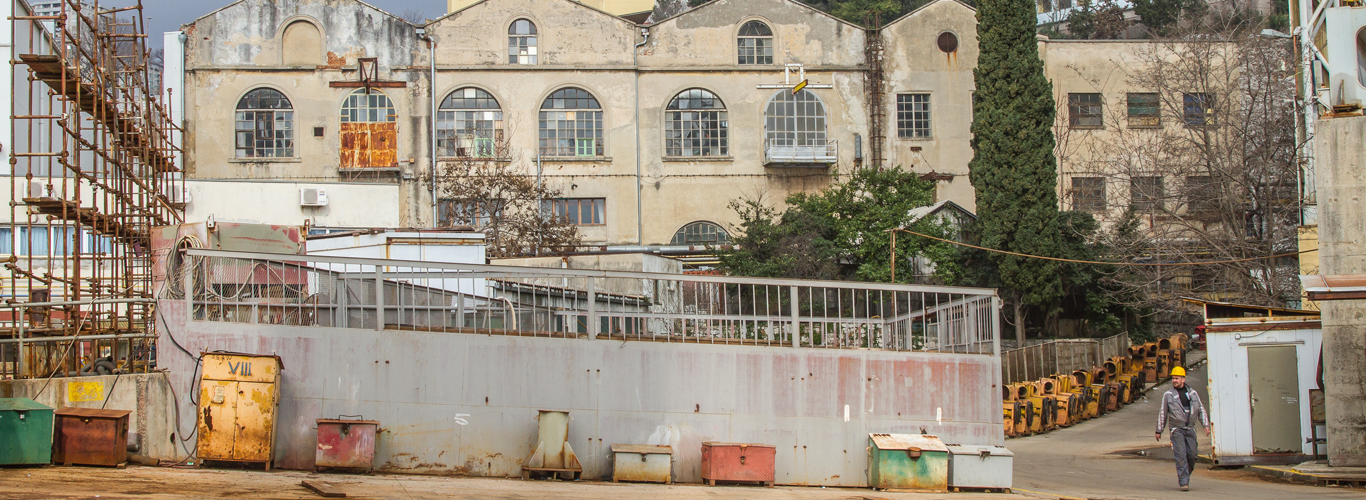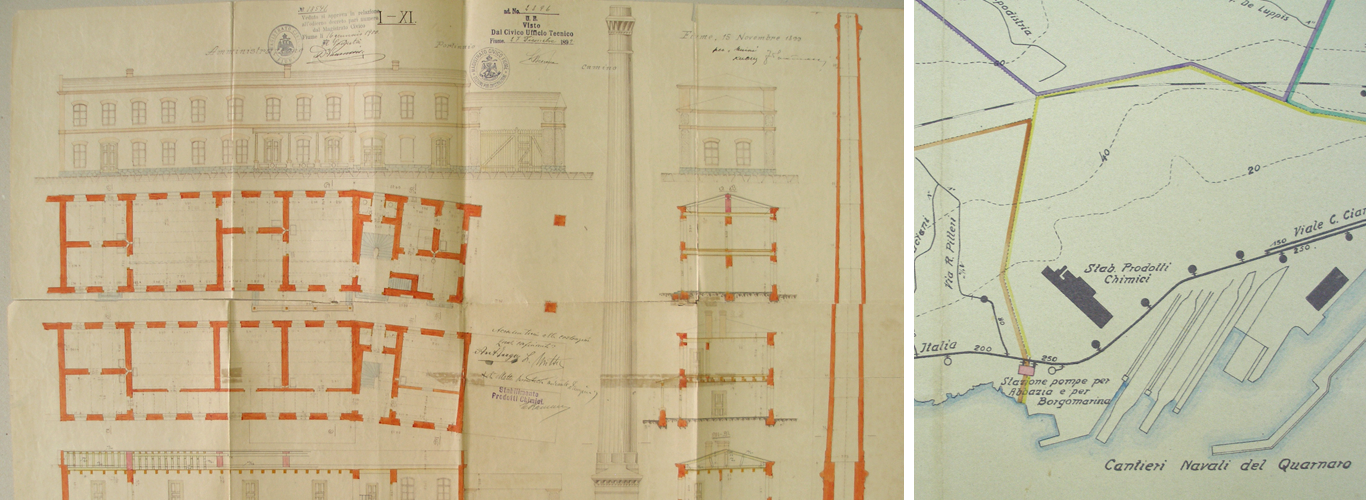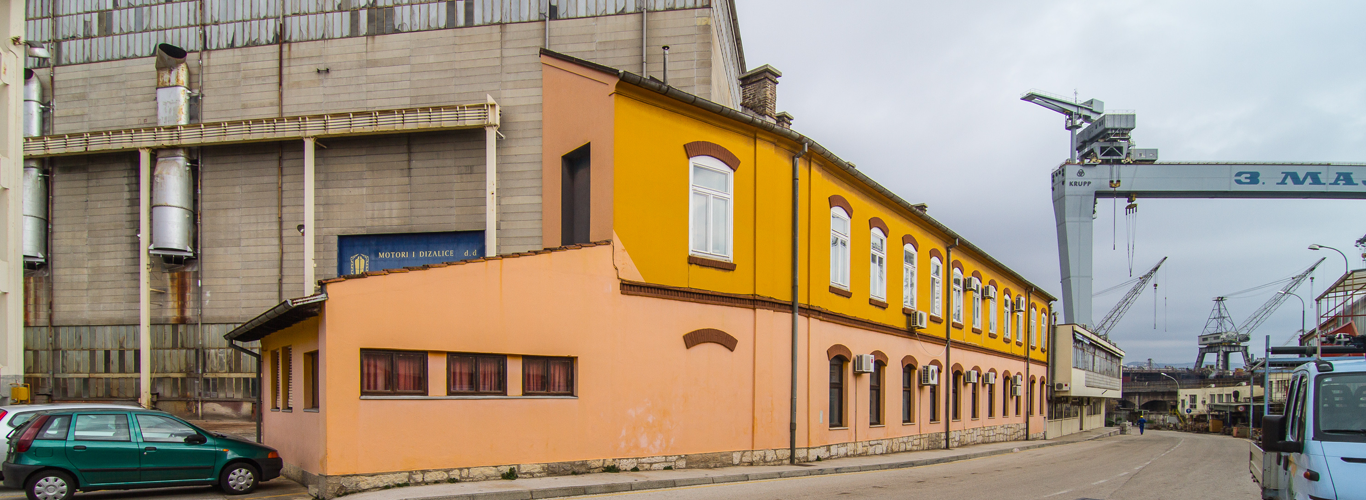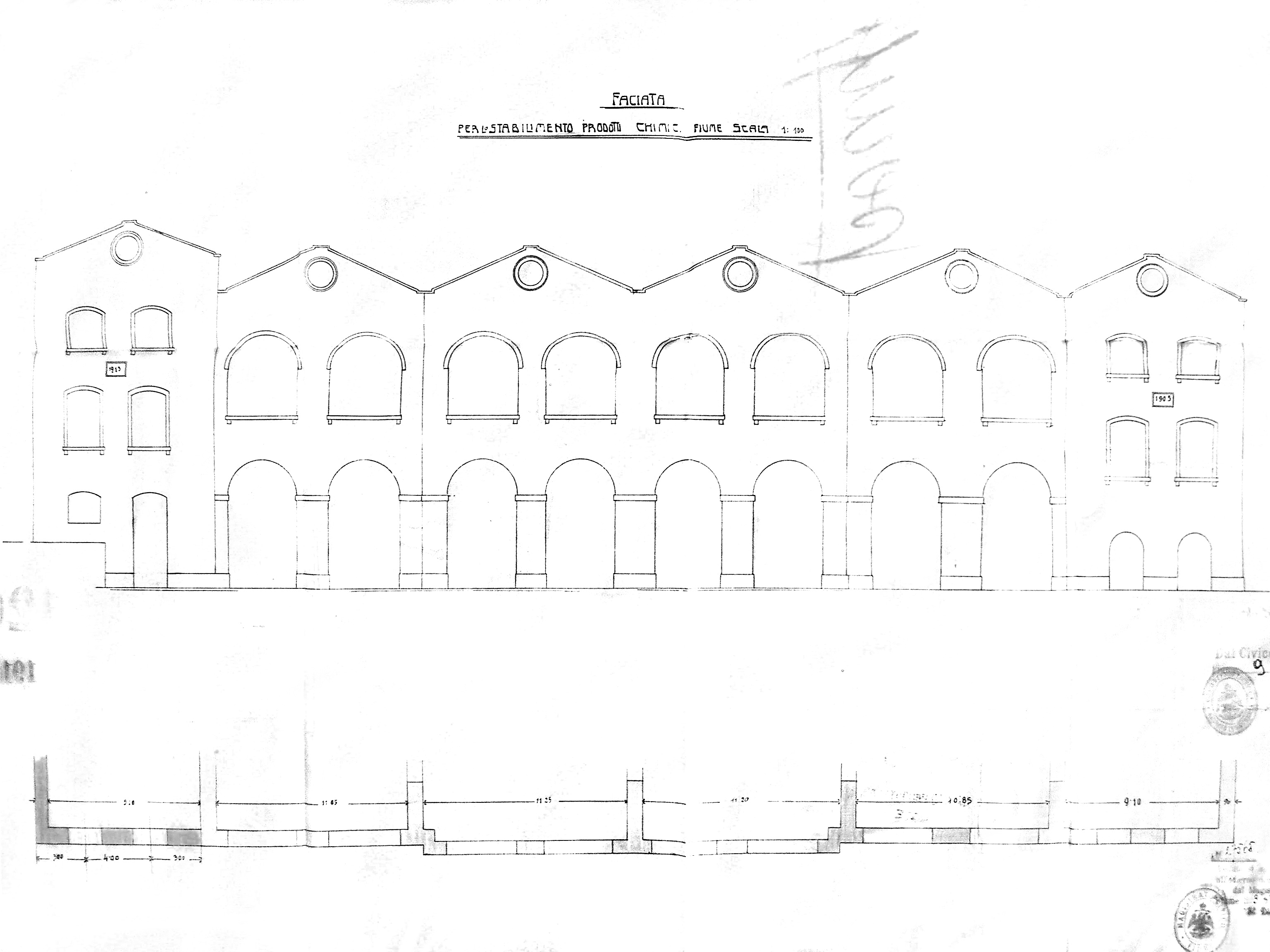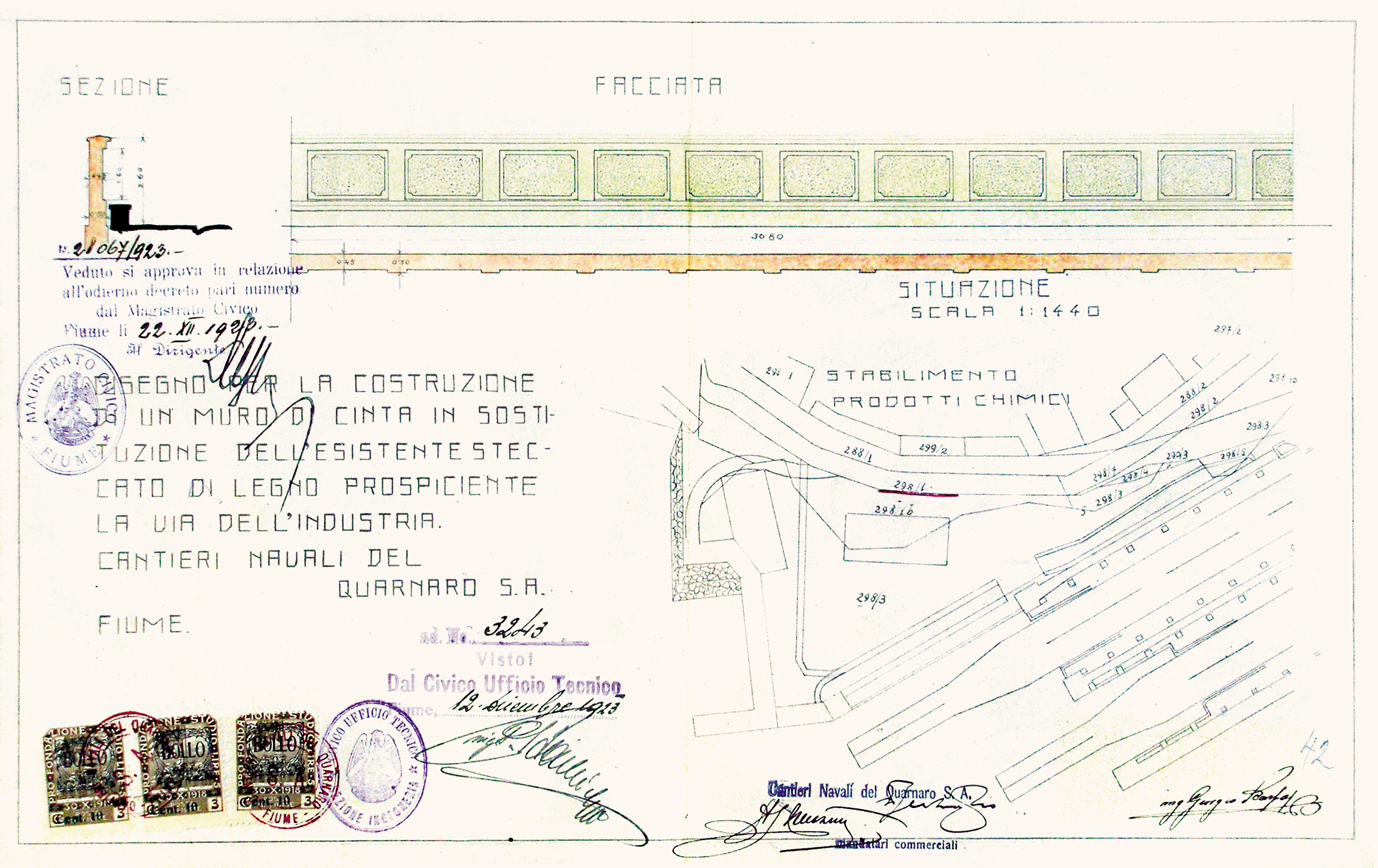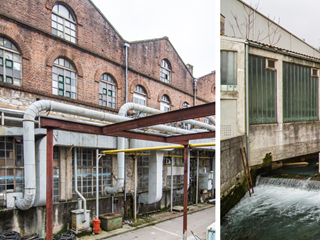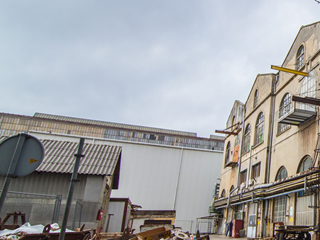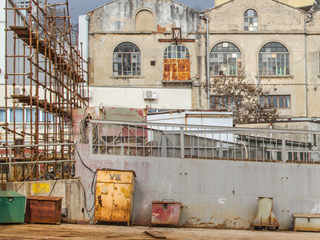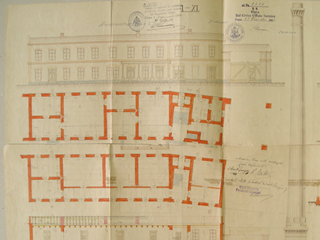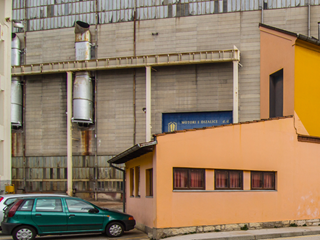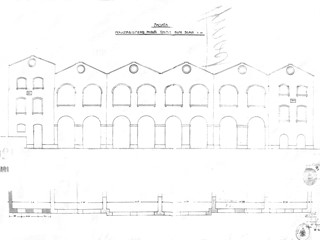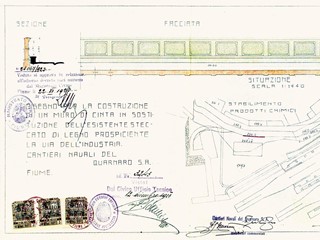Stabillimento prodotti chimici (chemical industries)
address: Brgudi, CerovicePeriod: Historicism
Kind: Immovable material heritage
Century: 19
Year: 1899
Purpose: industrial
Rijeka had several chemical factories. The factory Stabillimento prodotti chimici operated on Brgudi (Cerovice). The complex of several facilities was located within today’s 3. Maj Shipyard. Topographic sources and the date both show that this chemical industry existed before shipbuilding activities even started in Brgudi and that it later continued to operate alongside the shipbuilding complex. There is a draft from 1923 with the application for a construction permit for a new fence to be built on the site of the demolished wooden boundary that separated the shipyard from the factory.
Archival sources show that there were several phases of construction that took place later on. Part of the complex was built in 1899, according to plans of F. Mattiassi. The edifice built in 1913 along with its blueprints has been preserved. In 1924, the last construction works took place according to designs of engineer Luigi Luppis. The oldest of the preserved facilities is a longitudinal three-storey building from 1899, which is located along the western entrance of the 3. Maj Shipyard. The building does not have a pronounced façade decoration. The only prominent elements are the semi-circular brick lintels placed symmetrically over each of the twelve window panes on the ground floor and first floor.
The historian Klen states that this factory started operating in the mid-19th century and that it produced a variety of chemicals for the needs of the Monarchy’s Slovenian and Italian regions. One of the founders of the company in 1851 was the Englishman Walter Glennie Smith, the nephew of Walter Crafton Smith, founder of the Smith & Meynier Paper Factory. The importance of this plant was certainly large because its operation was encouraged by the most active investors of the time. In the 1870s, its president was Henry Meynier, also one of the managers of the Paper Mill, president of Rijeka’s Credit Bank, one of the first shareholders of Stabillimento technico fiumano, board member of the oil company Hungaria and, for a while, president of the Chamber of Craft and Commerce. The factory processed the imported phosphates into phosphorus and superphosphates, and pyrite into sulphur and other derivates. In 1873, it supposedly used a steam engine of 25 horsepower and employed thirty workers. Successful business operation of the company led to a gradual increase in the number of workers. Thus, it welcomed the beginning of the 20th century as a manufacturing plant with a hundred employees.
Valorization:
Today the entire factory complex is an integral part of the shipyard 3. Maj. It has been preserved in its most part, except some minor alterations in the buildings’ exterior and interior made during their modification for the needs of shipyard operations.
Bibliography:
JU 51, kutija 113, 165,
Klen, Danilo (ur.), Povijest Rijeke, Skupština općine Rijeka, ICR, Rijeka, 1988.
Lukežić, Irvin, Hartera, Sušačka revija, godina IX., br. 34/35, Klub Sušačana, Rijeka, 2001.
Mitrović, Pero; Barbalić, Radojica F., Riječka luka, u: Rijeka zbornik, Matica Hrvatska, Zagreb, 1953.

